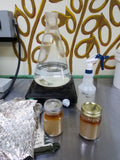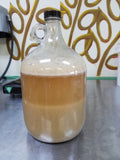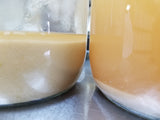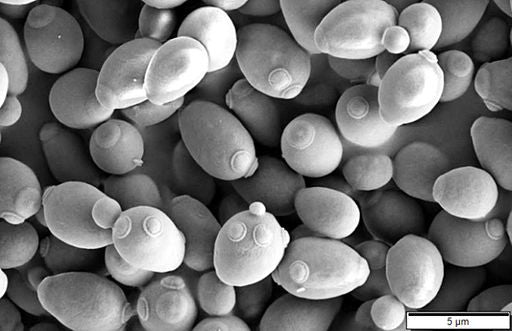Yeast is a very important factor in making great beer but is also a very expensive component of beer. If you feel competent in your sanitation, reusing yeast can save you money.
The Easiest Way is to simply "pitch" new wort onto the trub of a newly racked batch of fermented beer. The advantage is that it is quick and easy. The disadvantage is that this works only when, going from lighter to darker, and less hoppy to more hoppy beer. Otherwise color a flavors will carry over. Another disadvantage is this will work only one time. DO NOT pitch a third beer on the trub from your second re-pitched beer. Trying to reuse several generations this way will lead to yeast contamination and yeast mutations.
The Best Way is to rinse your yeast before reusing it. This makes a much more healthy yeast slurry that is free from beer and trub from the previous batch. The step are a follows:
1. Collect a couple pints of trub from the primary fermentor of the previous batch into a couple of sanitized mason jars.

2. Boil and cool some water to room temperature.
3. Pour the collected yeast along with the water into a sanitized 1 gallon jug. Be twice as careful with your sanitation. Leave at least 1/3 head space in the container.

4. Cap then vigorously shake the jug for 10-20 minutes. This separates the trub and hops from the yeast.
5. Let the everything settle for 10 - 15 minutes. The heavier unwanted trub and hop particles will settle first. The yeast will stay suspended in a second layer and a third layer of clear beer will be on top.

6. Decant off the top layer.
7. Pour the middle layer into another sanitized container leaving the trub and hops behind. Pour it like a bottle conditioned beer.... Not raising the bottom above the neck.

8. Cold crash overnight, pour off the top beer, then transfer the creamy stuff to sanitized mason jars.
9. Add pre-boiled then cooled water, leaving 10% headspace and store in the refrigerator for up to 2 weeks. Loosening the lid every day or two to prevent pressure build-up.


